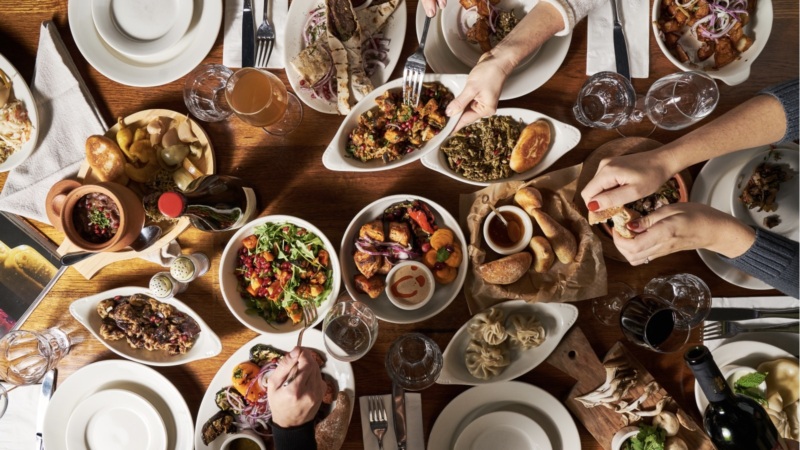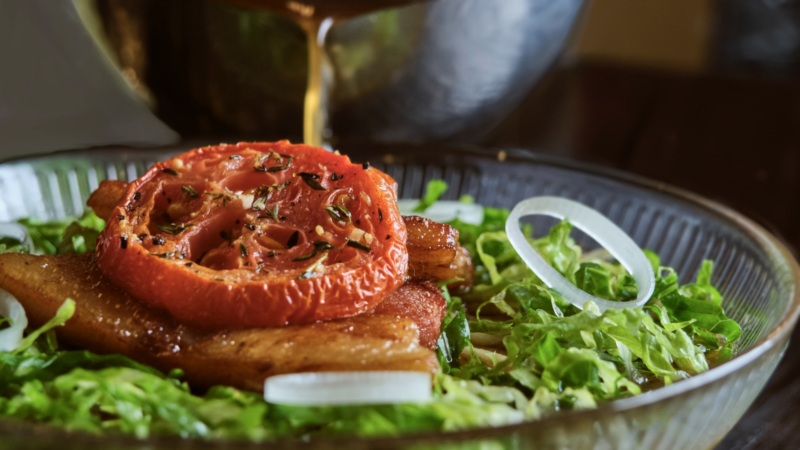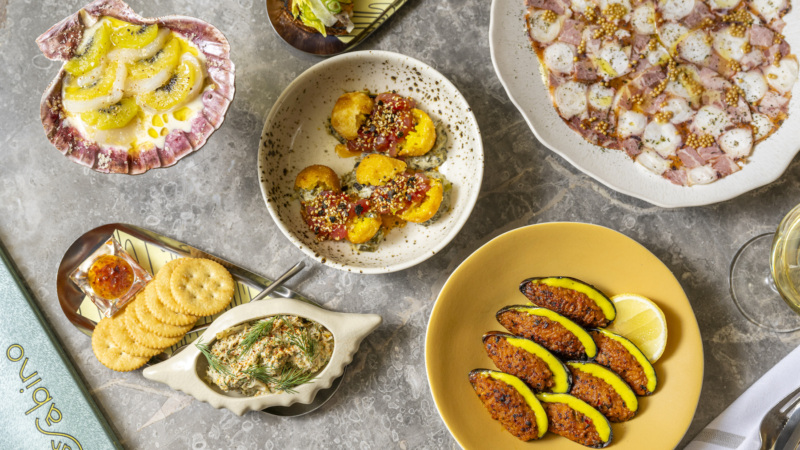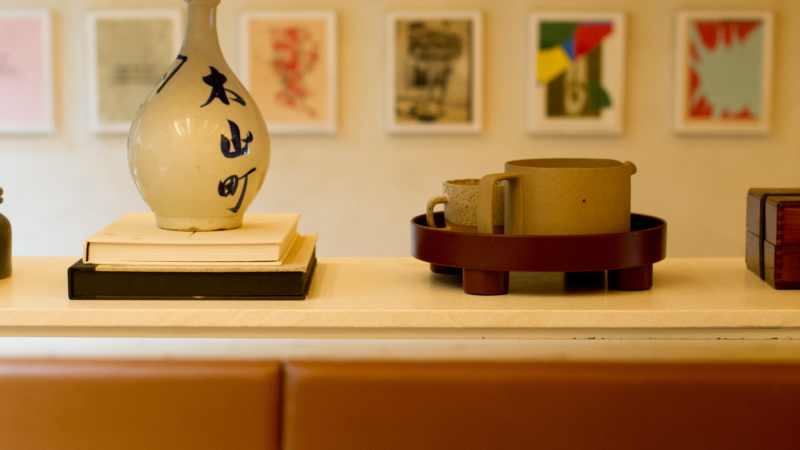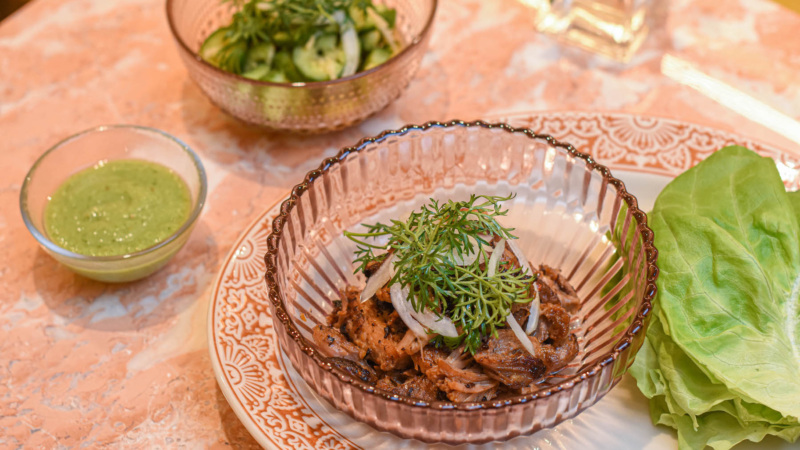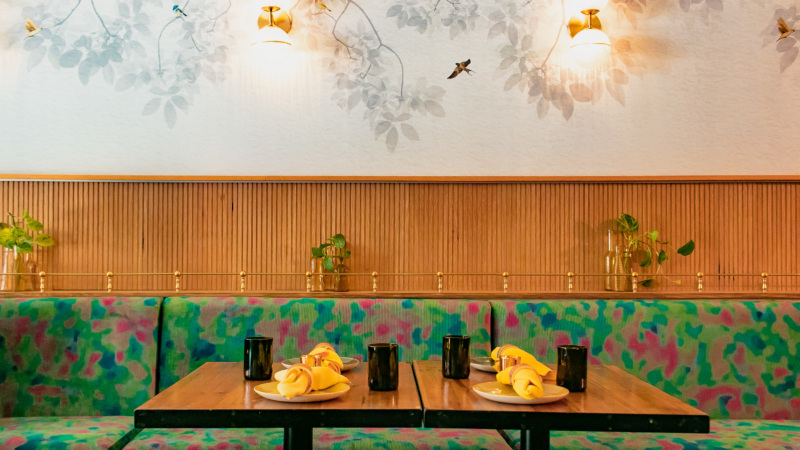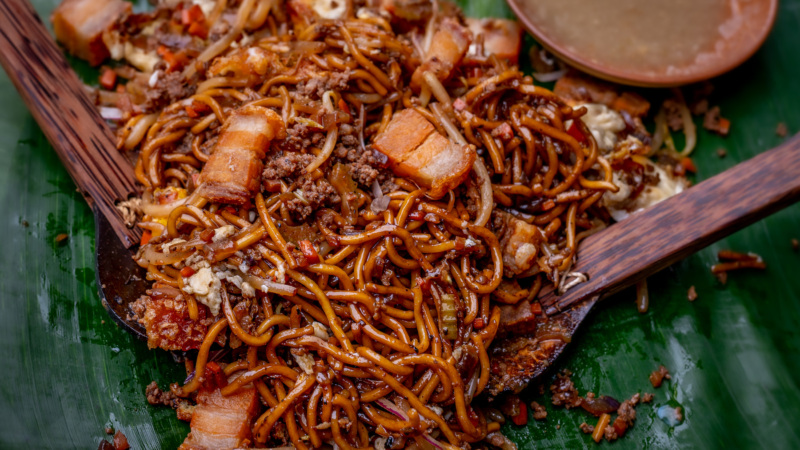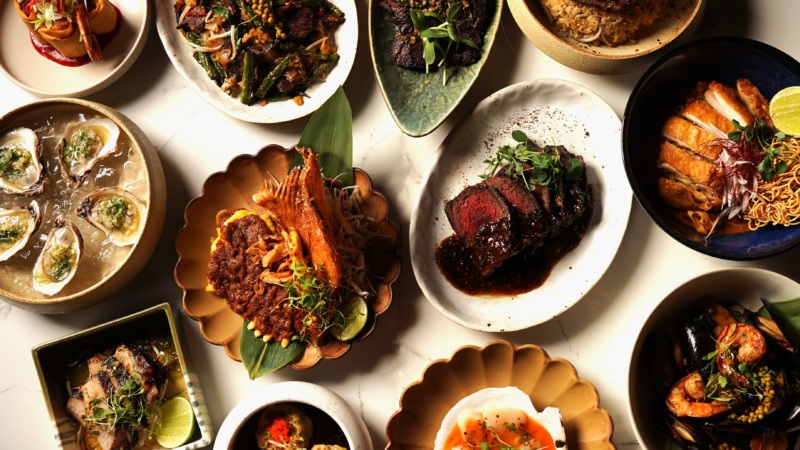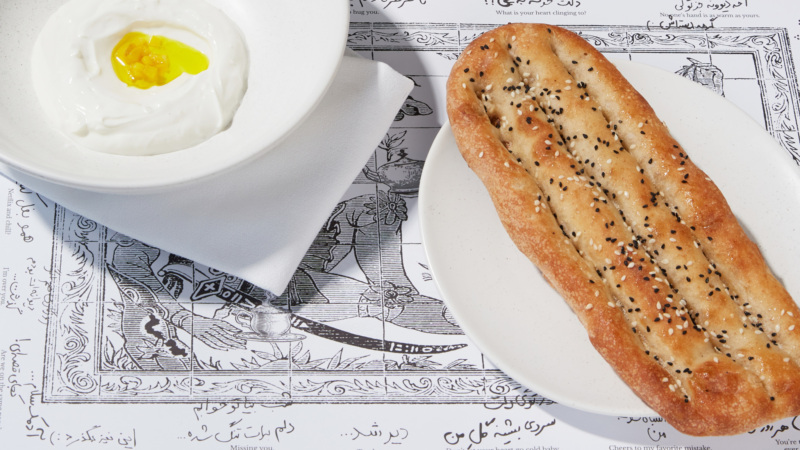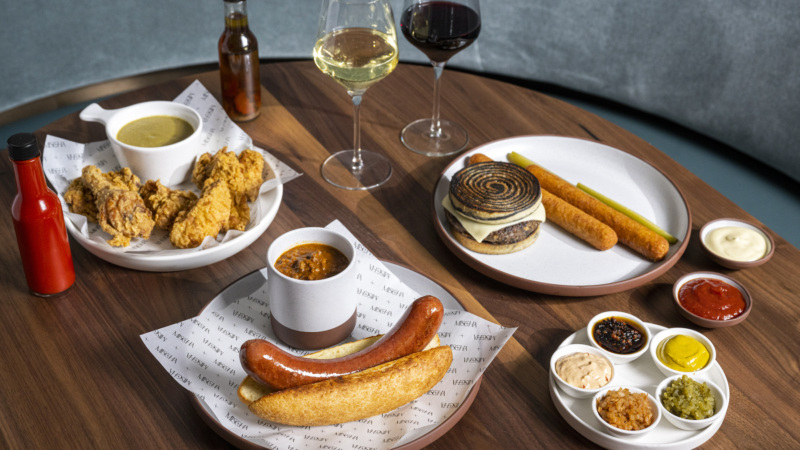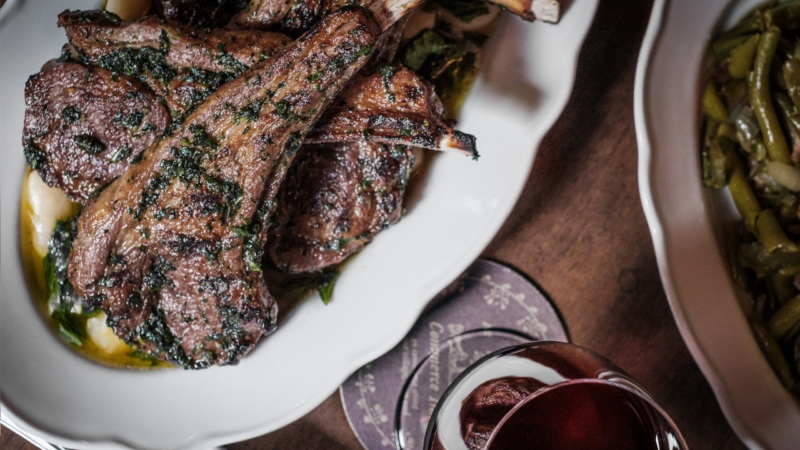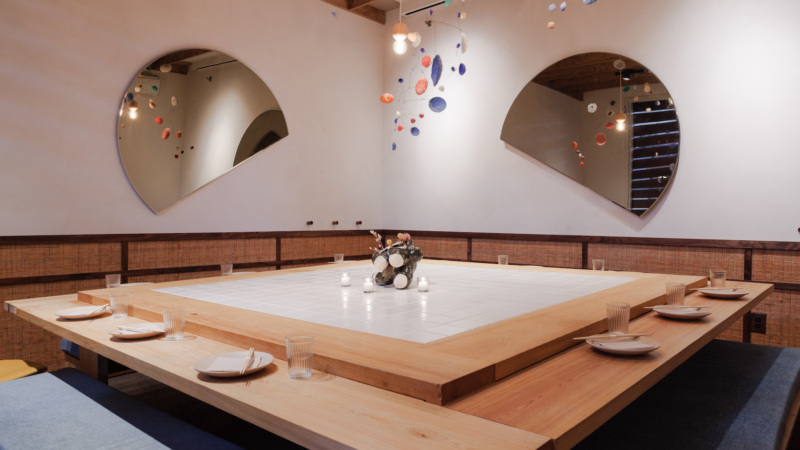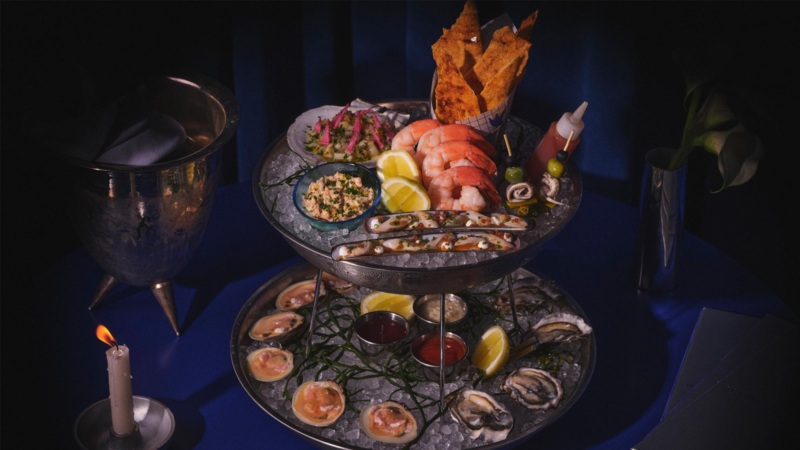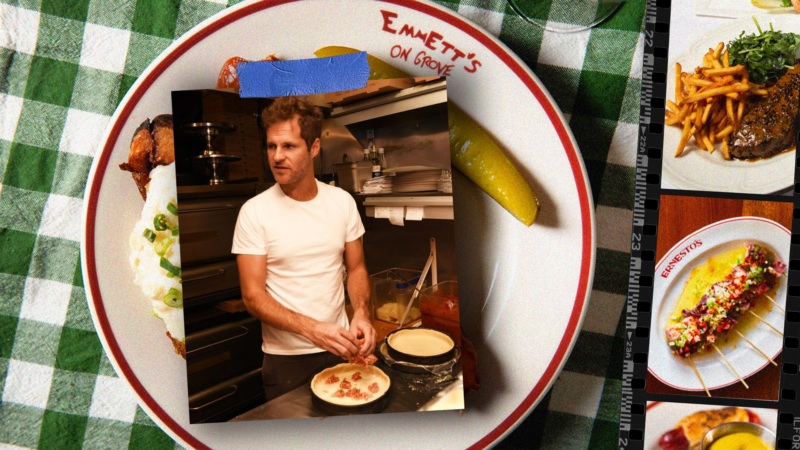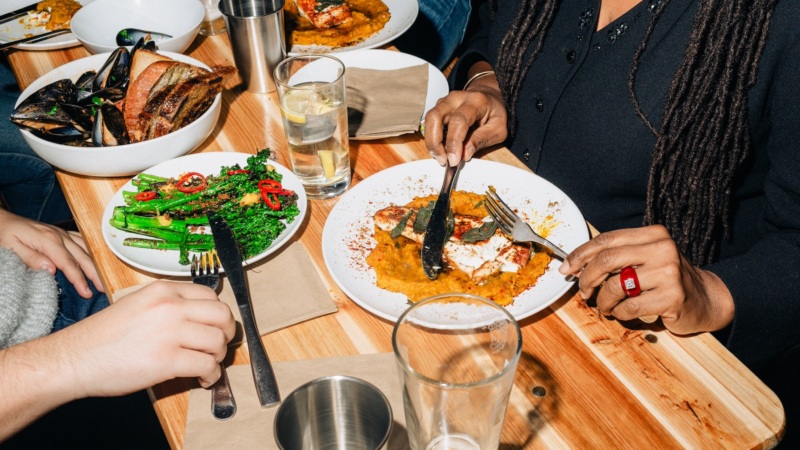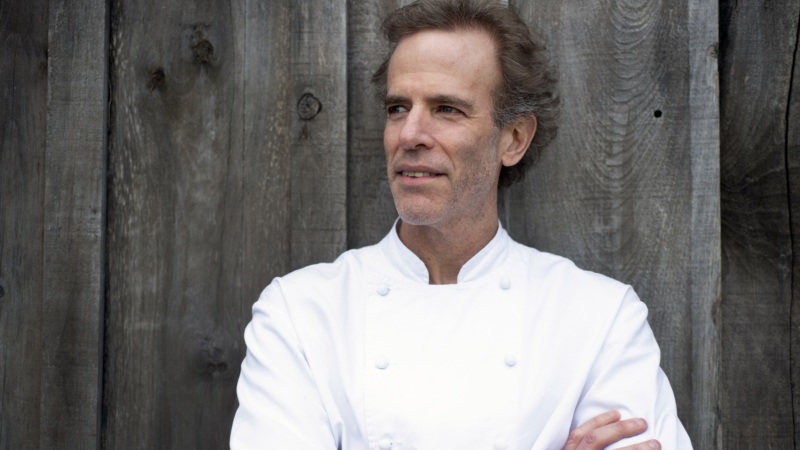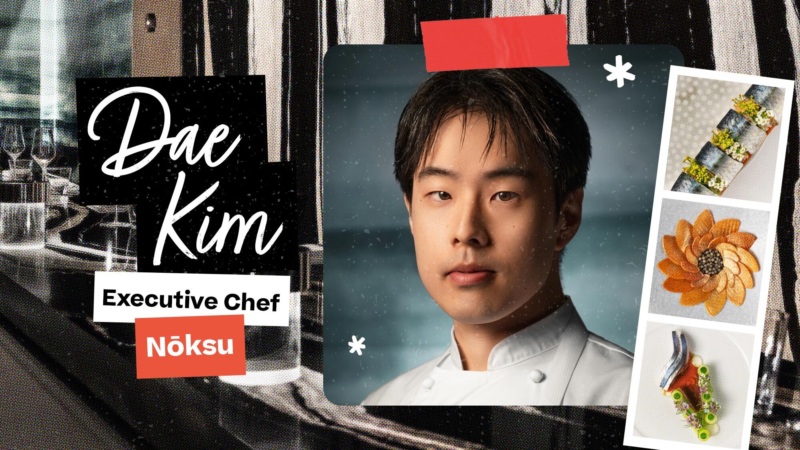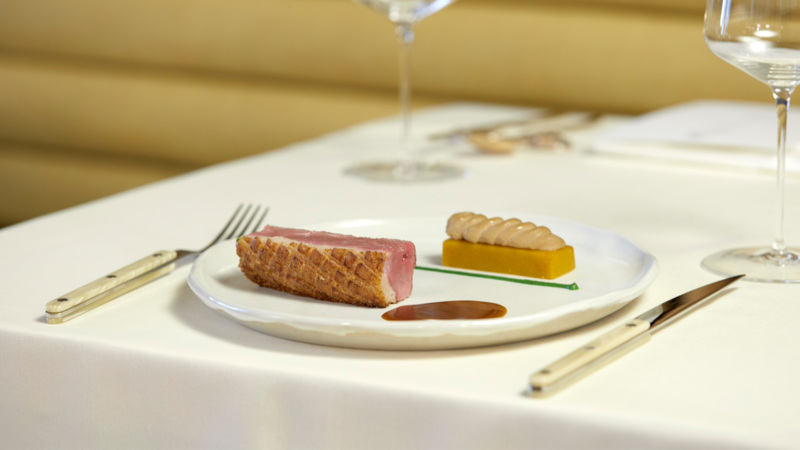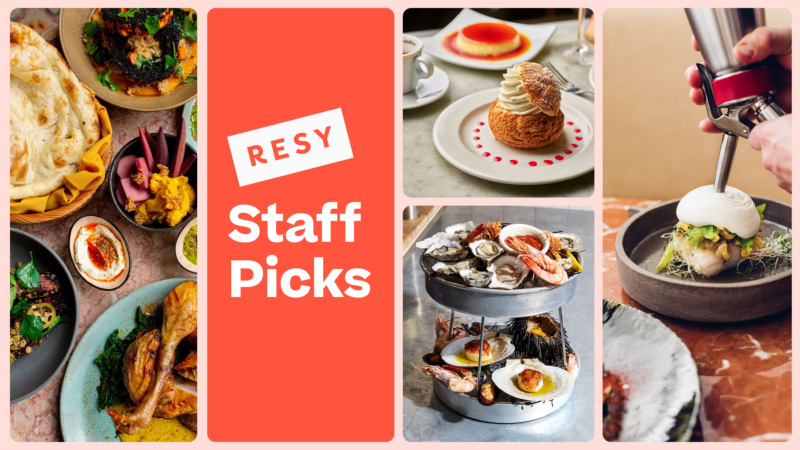
How Brooklyn’s Lingo Redefines New American Cuisine
Opened this April just a block from the water in Greenpoint, stylish 48-seat Lingo (Japanese for “apple,” in a nod to the Big Apple) offers the sophisticated eclectic vision of two worldly creative women with Asian roots and different career trajectories: Tokyo-born owner Misako Hsu, who comes from the fashion world, and Chinese Canadian chef Emily Yuen.
Yuen, who hails from Vancouver, moved to Australia at age 21 to work at a Melbourne modern French restaurant, kickstarting what she describes as her “longtime dream of cooking and traveling.” From there she landed in London, at the classically Gallic Michelin-starred La Gavroche, “which taught me so much about French refinement, plating, discipline, and fundamental techniques,” she recounts.
Next up, Daniel Boulud’s DB Bistro in Singapore, where she perfected her French skills while immersing herself in the Asian food culture around her. When her journeying took her to Boulud’s modern Mediterranean spot, Boulud Sud in New York, she got smitten, she says, with the “endless possibility of U.S. ingredients with a million suppliers who deliver anything, from Maine uni to the freshest seasonal vegetables.”
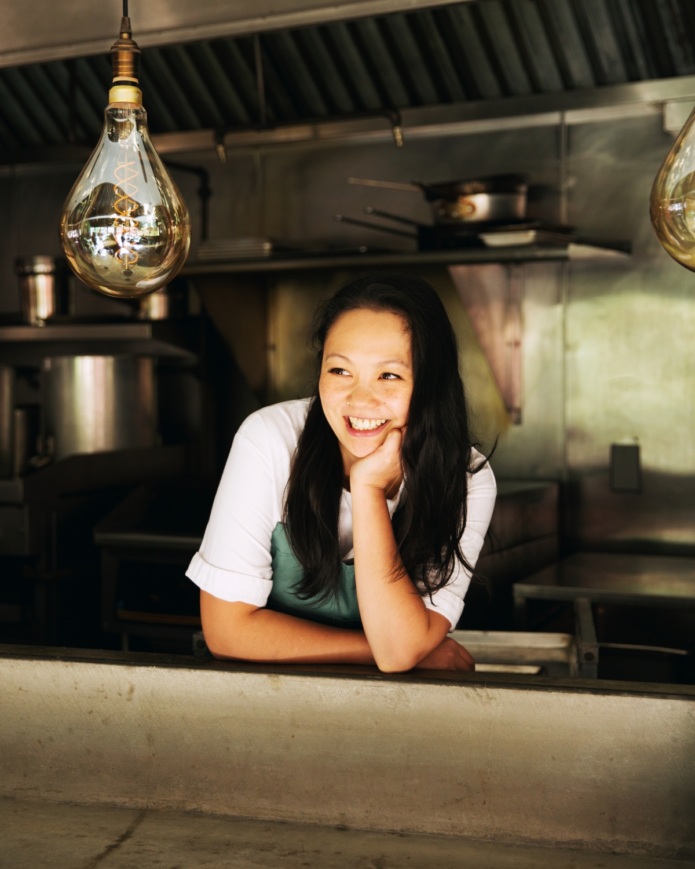
But it was her experience as executive chef at Bessou, a contemporary Japanese American spot in Manhattan, that got Yuen to appreciate Japanese techniques and ingredients. “I found French and Japanese cooking surprisingly similar in their refinement and focus,” she says. “Everything just kind of connected and clicked. Until then, I wasn’t really planning to go into Asian food. But the success of chefs such as Dave Chang (Momofuku Noodle Bar) inspired me to go to my Asian roots.”
Looking for a fresh start after Bessou in 2021, Yuen connected with Hsu, who owns Shiki NYC catering and was looking for just the right chef-partner for a new spot she was planning to open in Greenpoint.
Hsu moved here six years ago from Tokyo where she was a fashion magazine editor with a keen eye for detail and a passion for restaurants. “I discovered that New Yorkers were familiar with sushi, ramen, and izakaya-style food,” she says. “But that’s only a small part of what we actually eat in Japan! And I felt there was so much potential, so much more for diners here to discover.” The Japanese are creative and innovative, she adds, noting “they have Japanese Korean, Japanese American, and Japanese Italian styles of cuisine which all somehow taste ‘Japanese,’” she says, with a grin. That’s what she wanted to introduce to New York. And she wanted a chef who could do something not even a Japanese chef could come up with: “I met Emily,” Hsu says, “and she was just perfect!”
Yuen feels likewise. “Meeting Misako felt, like, ‘Wow, fate!’” she exclaims. “We have the same ideas, the same drive for perfection; everything just aligns, from the style of service to what’s on the menu.” Seeing her 18 years of cooking in different countries all come together, “it’s kind of amazing,” she says. “Even if we’re completely exhausted,” adds Hsu.
Here are the five menu highlights that capture their shared vision for Lingo.
More from Resy
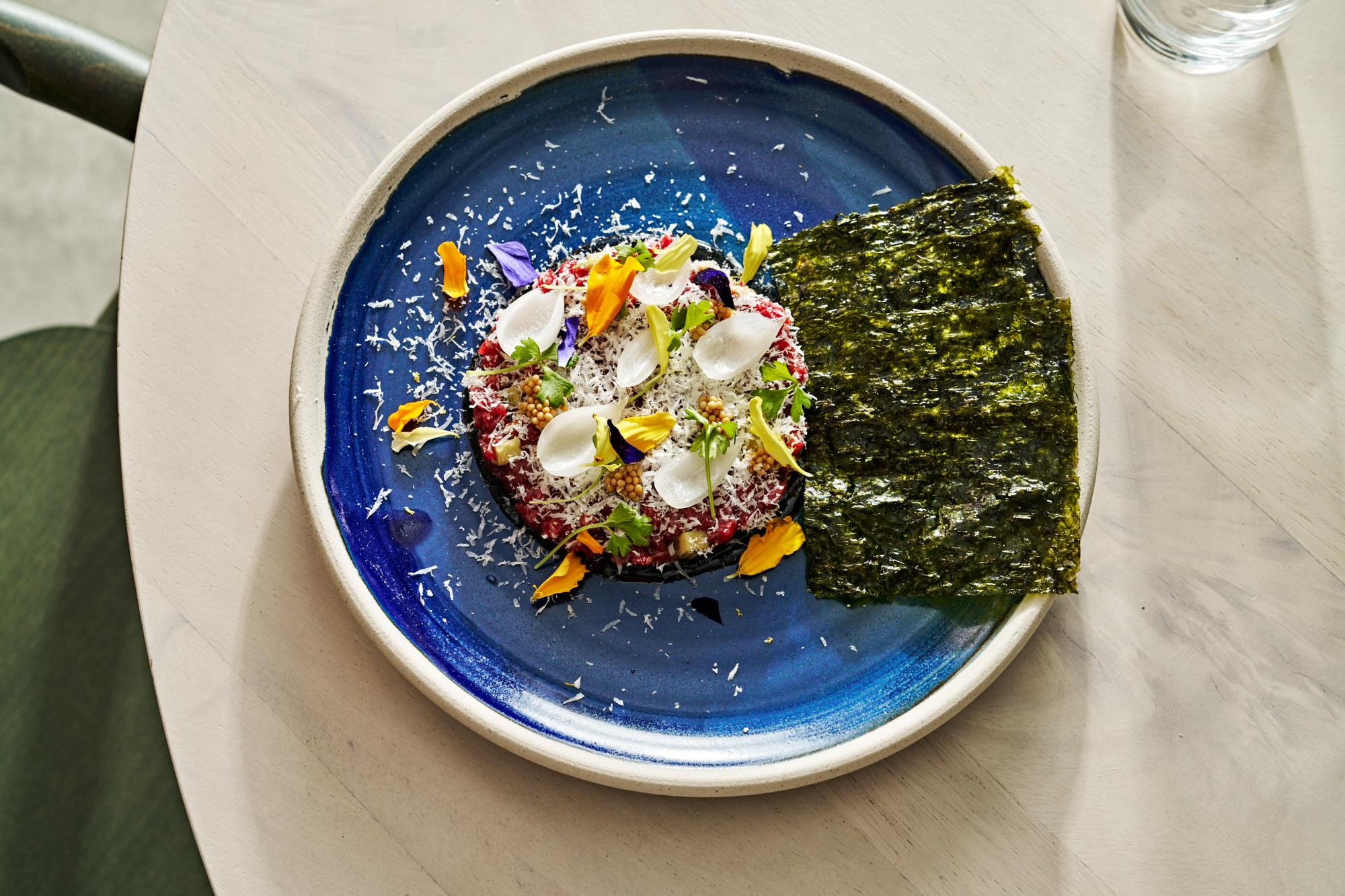
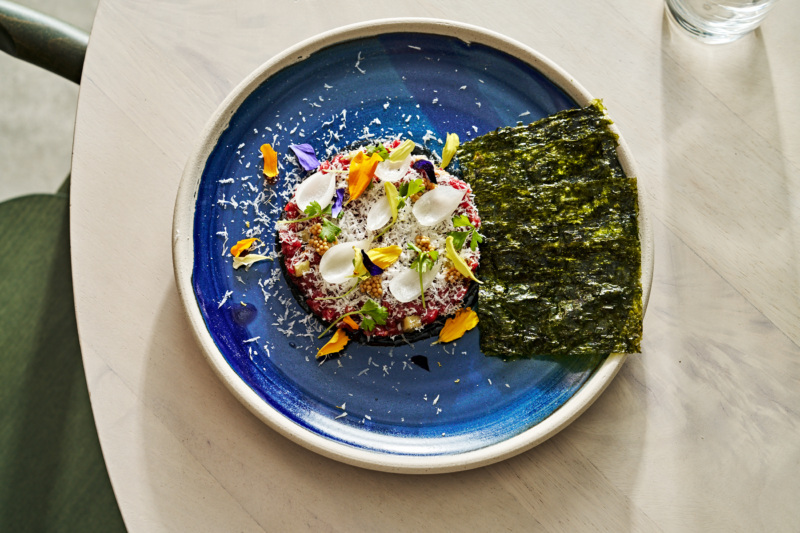
1. Steak Tartare
Black sesame, smoked cheddar, nori wraps
Yuen’s flower-strewn beef tartare arrives at your table on a cobalt-blue ceramic plate and looks almost too delicate and pretty to eat, but delivers complex, cross-cultural favors. “Working at French restaurants I’ve always loved beef tartare” she explains. “It was something very classic and comforting, yet refreshing and different.” While Yuen is not a big red meat eater herself — she’s not one to order a steak at a restaurant — she says, “But I really love how beef tastes and it made sense to put my personal version of beef tartare on the menu.”
That personal version starts with hand-chopped Neiman Ranch skirt steak. A layer of black sesame paste goes on the plate first, riffing on the sesame dipping sauce normally served with Japanese beef shabu shabu. The beef, quickly tossed with a flavorful soy-garlic sauce with lots of black pepper, is topped with grated smoked cheddar to lend creamy smokiness. Whimsical finishing touches include pickled pearl onions (“Something I used so much in French cooking,” says Yuen), plus pickled mustard seeds, microgreens, and adorable flower confetti. “And we serve it with toasted nori squares on the side, so people can improvise their own little wraps,” says Yuen.
“When I first tasted this dish as we tested the menu,” says Hsu, “it was totally different from any tartare I’d ever tasted. I was also so happy how it reminded me of our shabu-shabu. I told Emily, ‘Yeah, let do this! Let’s put this on the menu!’ I’m really happy we did.”
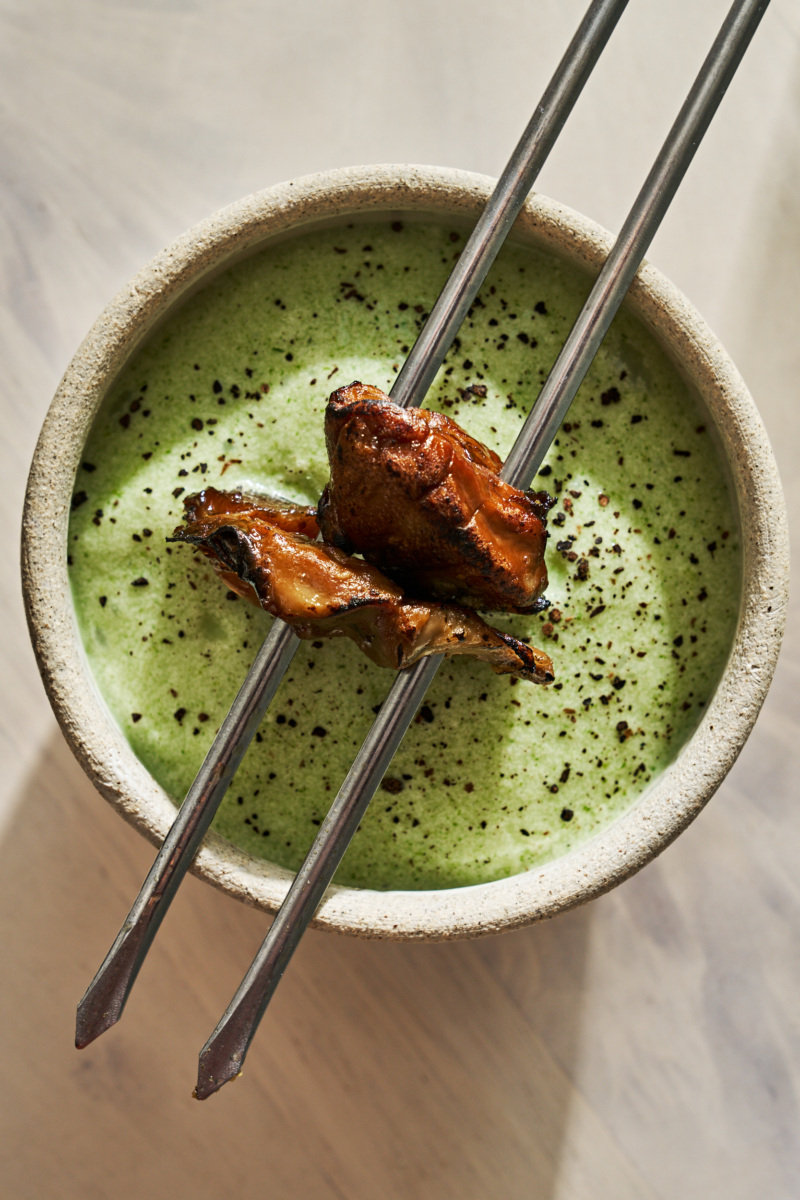

2. Grilled Smoked Oyster Chawanmushi
Tarragon foam
Chawanmushi and tarragon? Not exactly words one expects to hear together, but Yuen makes such a convincing case for this pairing of disparate flavors and cultures you might not want to have your chawanmushi any other way. “The dish begins as a small bowl of very traditional warm chawamushi that I steam in a classic technique, making sure not to overcook the delicate savory egg custard,” says Yuen. “It’s the dashi prepared in house that makes it so special.”
The herbal-green tarragon foam Yuen spoons on top is a modern French accent, that to her somehow feels totally natural. She adds, “And I love how the foam that we make in a canister [El Bulli style)] creates this subtle, interesting contrast of different soft textures” — something airy and bubbly to offset the silky-smooth chawanmushi. Yuen’s inventive layering of flavors continues with plump Bluepoint oysters, which she confits first in olive oil, lightly smokes, then grills on a metal skewer to order. “Our servers tell our customers to take the oysters off the skewers, and mix them into the custard,” she notes. That way, the umami of the dashi, the anise accent of tarragon, and the briny-smoky flavors of the oysters can work their magic together.
“Chawanmushi is something so Japanese, I wasn’t sure New Yorkers would like it,” confesses Hsu. “I was a little bit anxious, but Emily’s version is so amazing and perfect, our customers love it.”
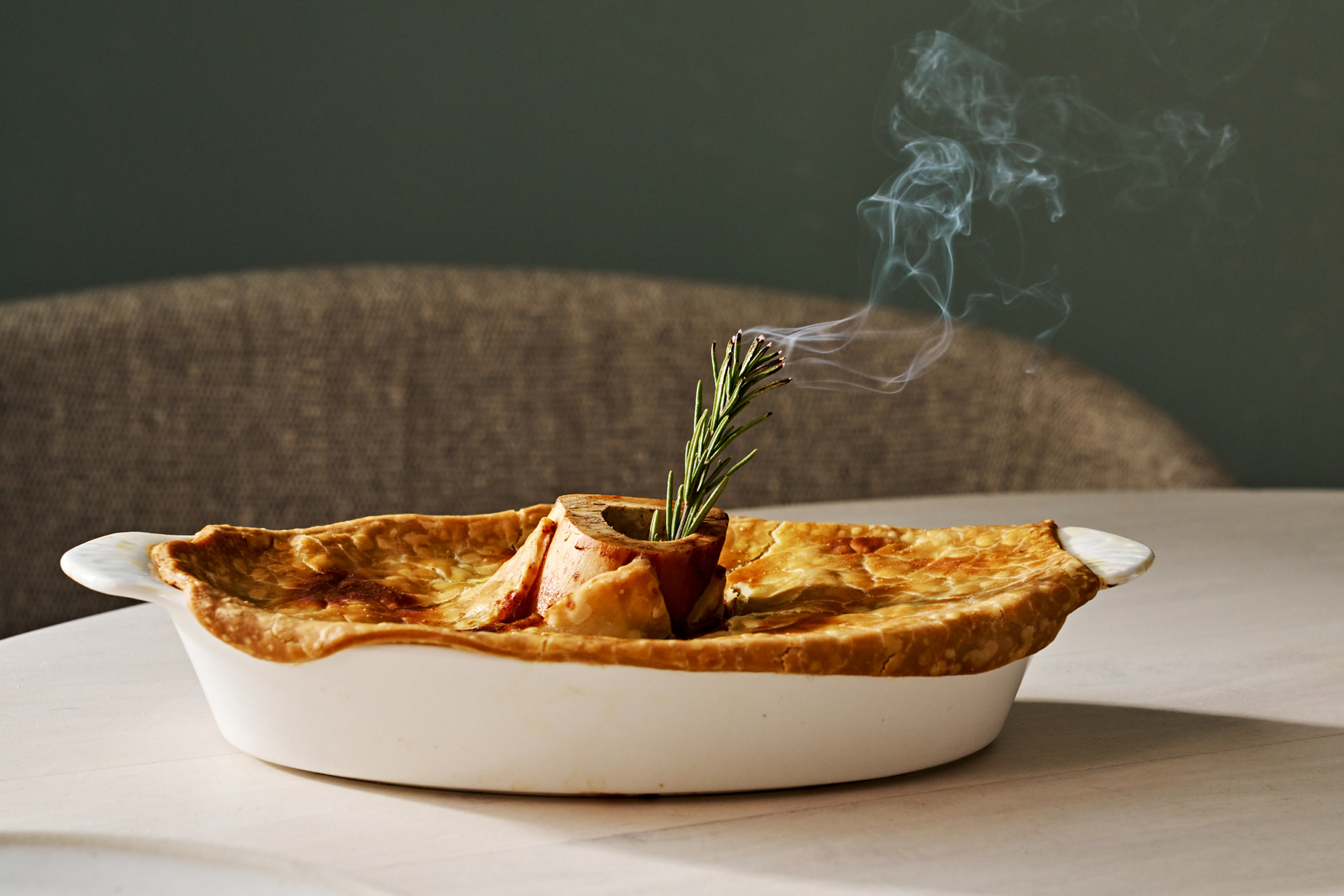

3. Lingo Beef Pie
Hokkaido-style braised beef curry, bone marrow, leeks, carrots, English peas
Was the beef pie idea inspired by Yuen’s stint in London? “Yes, kind of,” she says with a laugh. “When I worked at La Gavroche there, I fell for pies because being a cook, you didn’t have much money and you had to eat something fast. Me and my colleagues ate lots of those hand pies the British called pasties — steak-and-ale kind of stuff.” For her own filling, Yuen sears an osso-bucco cut beef shank then braises it just short of forever in an aromatic mixture of beef broth, dashi, and soy. In a further Japanese twist, she finishes the braise with a housemade Hokkaido-style curry featuring spices like cardamom, star anise, and cinnamon, and a bright accent of English peas, then drapes the British-French-Japanese stew with classic American pie pastry, to bake until golden. For a bit of drama, her creation arrives at table with a marrow bone jutting from the middle with a smoldering rosemary branch attached.
“Japanese people love curry,” notes Hsu, offering her own thoughts on the dish. “To us, it means home cooking. Whenever young people learn to cook, curry might be the first dish they make. I was wondering how we could elevate it into something more interesting. Then Emily came with the idea of putting it inside a pie. Which was surprising to me because British cooking has yet to take off in Japan. But I’ve never seen such a beautiful — and surprising — curry dish in my life! It’s been a hit for us!”
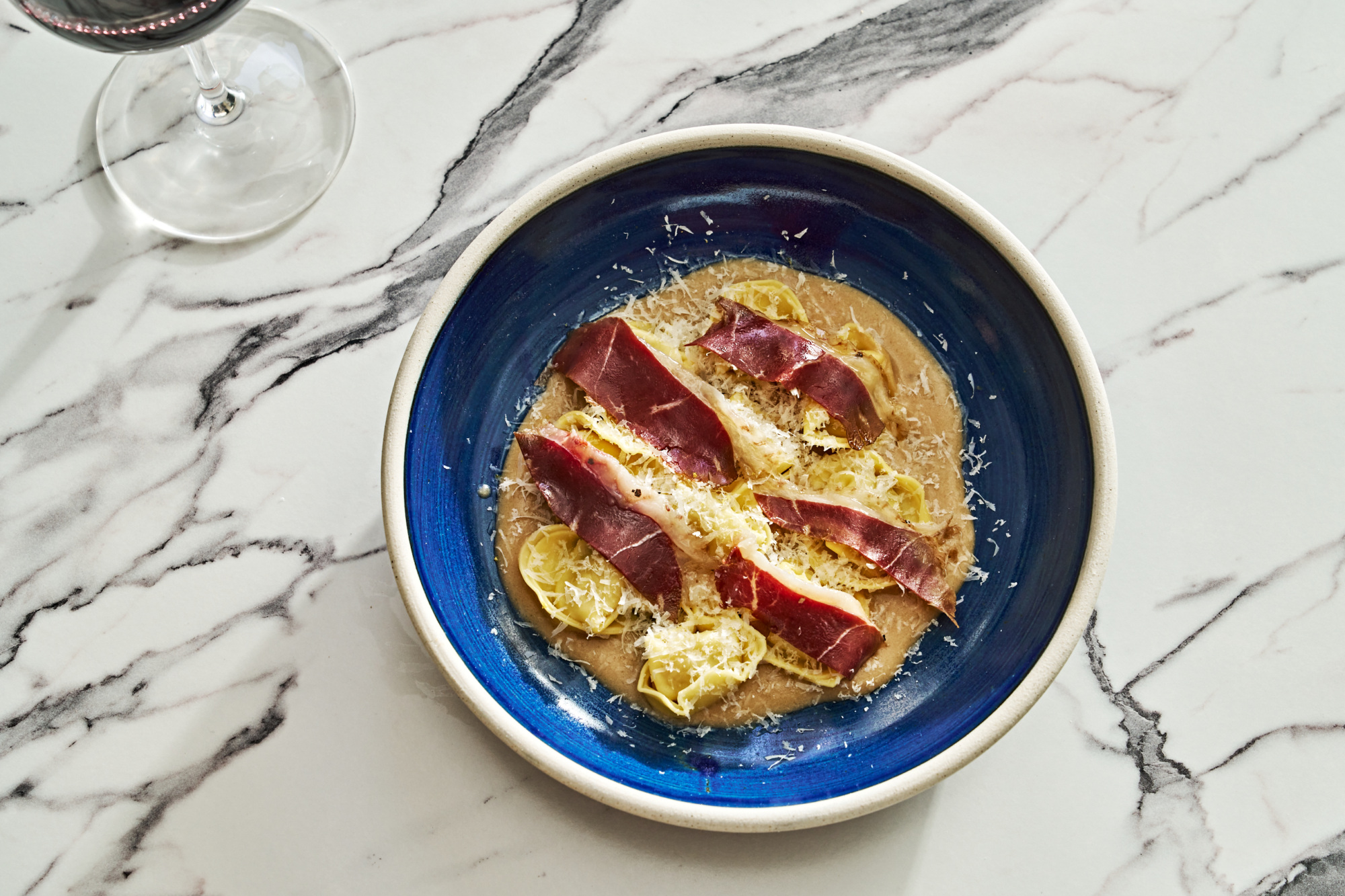

4. Ricotta-Spinach Tortelloni
Soy brown butter, aged speck
“In Japan we also have this pasta obsession,” says Hsu. “We have so many different kinds that most foreigners don’t even know. Have you ever tried our napolitan [a dish of spaghetti with cured meat, veggies, and ketchup-based red sauce]? Some non-Japanese find it strange, but we love it so much! Emily’s tortelloni at Lingo are more classic Italian, I guess.”
“I love the taste and feel of fresh pastas,” says Yuen. “Even when I worked at French restaurants, we made it a lot. My tortelloni have a classic Italian filling of ricotta, spinach, and garlic, but the dish, to me, is actually more about the sauce that goes underneath. It’s a classic brown butter, into which we mix shoyu and dashi — a riff on a dipping sauce served with soba — and emulsify until smooth.” Yuen sends the dish out topped with grated cheese and dark-rosy petals of aged speck (the lightly cured Northern Italian ham) for that accent of umami and smoke that she loves. “And our tortelloni dough actually has sake in it!” Yuen reveals cheekily. Why? “The traditional filled pasta dough often has white wine in it, but since we don’t use wine for cooking at Lingo, sake made sense. Otherwise, it’s a classic super-rich northern Italian pasta dough, with something like 35 egg yolks to four pounds of flour!”
And what happens with all those leftover egg whites? “Our bartenders use them, for our most popular cocktail, this really cool drink called Ichiko — a riff on a sour, with Roku gin, strawberry, and nigori sake,” Yuen notes. “It’s our most popular cocktail,” says Hsu.
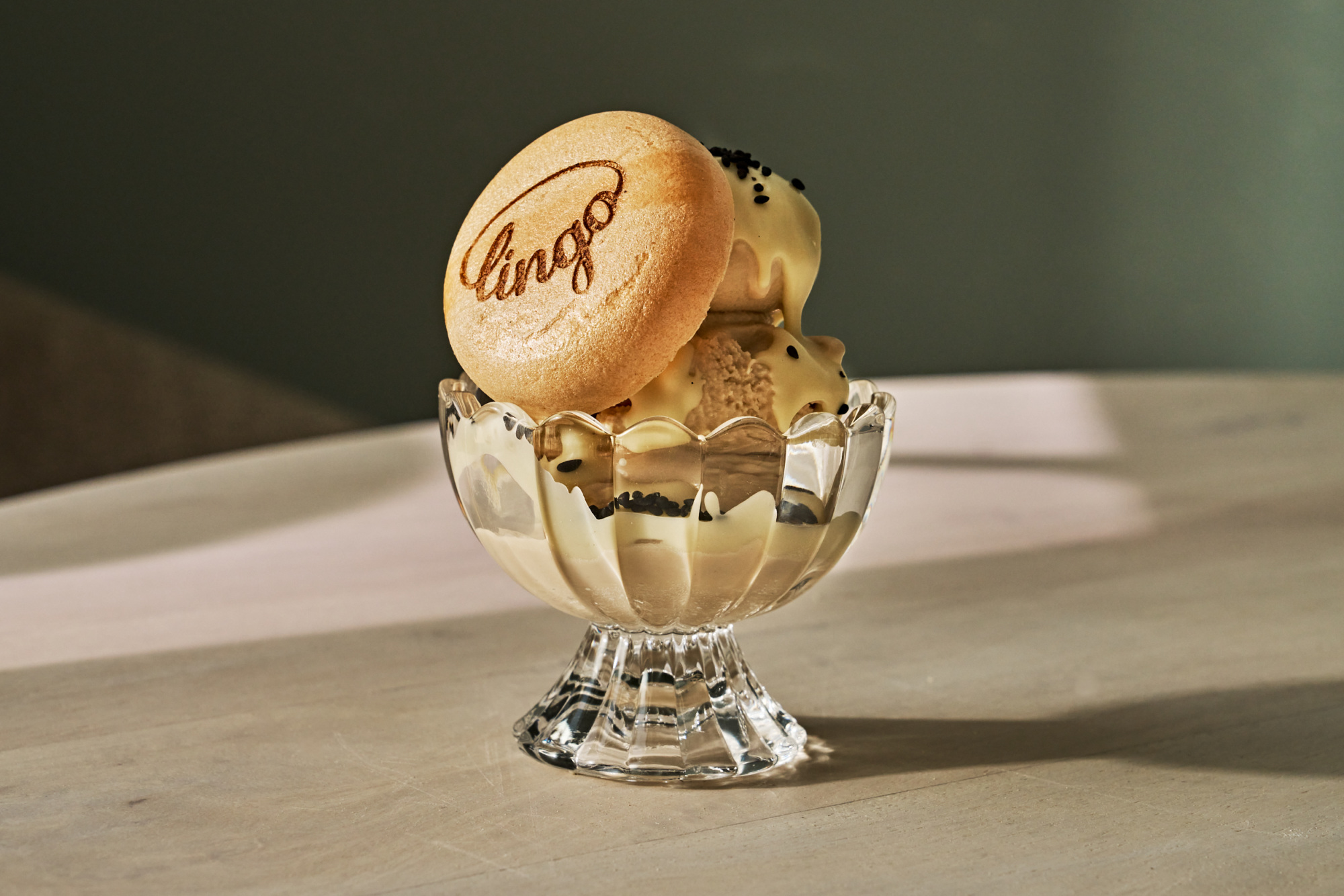
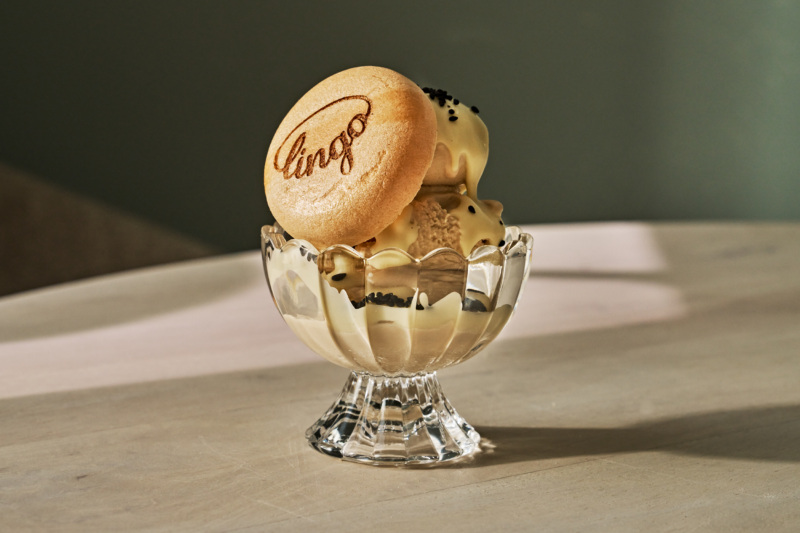
5. Oolong Tea Ice Cream
White chocolate drizzle, Monaka wafer
“My friend, Gizelle Pare, a great pastry chef from Vancouver, helped us with our dessert menu,” Yuen explains. “Oolong tea is so classic for Chinese and Japanese people, but Gizelle’s recipe is extra cool because it uses no eggs and brown sugar, so it kind of tastes like a brown sugar bubble tea. Imagine a deliciously caramelized oolong.” Topped with a drizzle of gooey white chocolate sauce, and a Japanese Monaka wafer stamped with Lingo logo, the playful sweet is so popular, “our customers literally obsess over this ice cream,” says Hsu.
She adds: “When I came to New York I was really surprised that matcha was everywhere. It’s so overused that we definitely didn’t want a green dessert on the menu. But oolong tea flavor is perfect for cleansing the palate from all the rich flavors of a Lingo dinner. “We’re working on more dessert ideas,” promises Yuen, “so you’ll see more interesting sweets on the menu.” One that was recently added: a sesame oil cake, Yuen’s take on Mediterranean olive oil cake, served with a cherry compote and a cream cheese whipped cream. It’s just one more delicious example of her effortlessly cross-cultural palate.
Lingo is open Wednesday through Sunday for dinner starting at 5 p.m.
Anya von Bremzen is a James Beard Award-winning book author and journalist based in Jackson Heights, N.Y. Her latest book, “National Dish,” comes out this month. Follow her on Instagram. Follow Resy, too.




